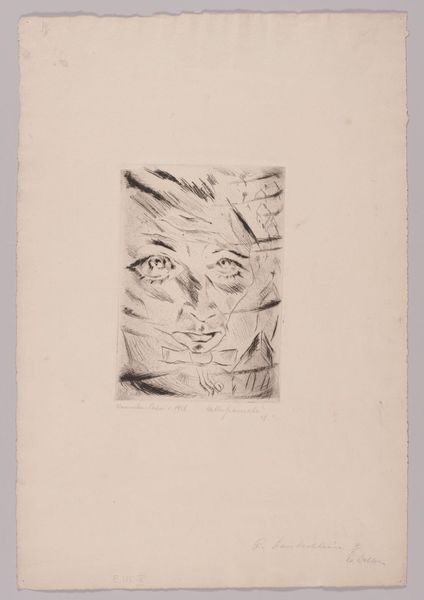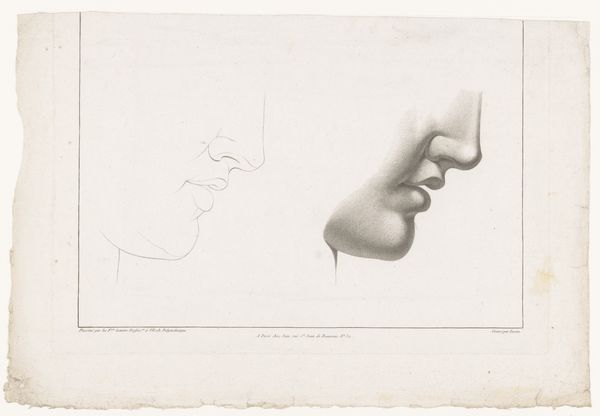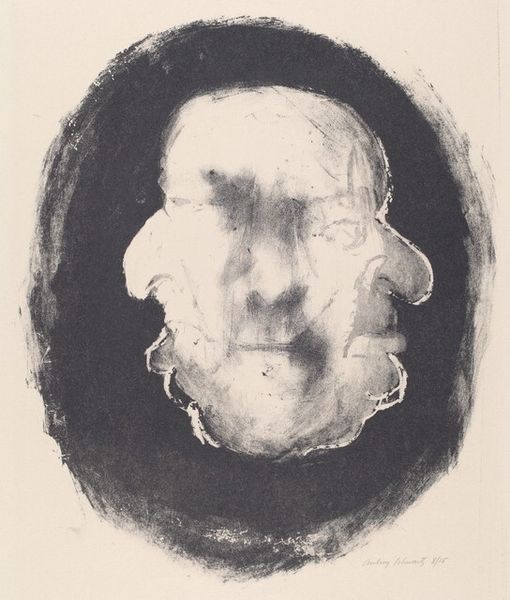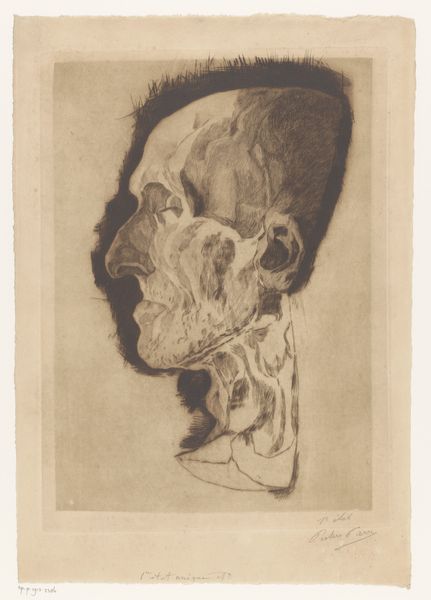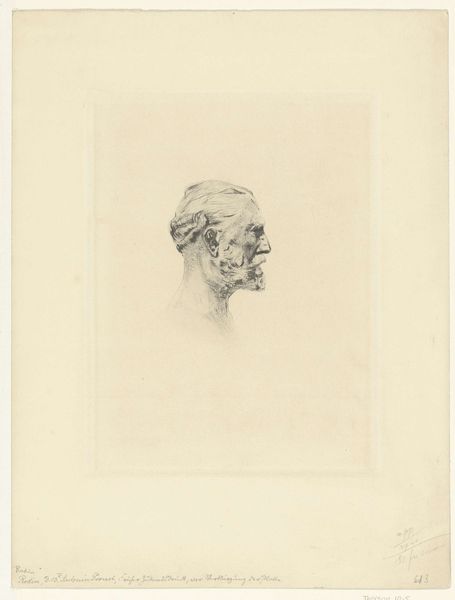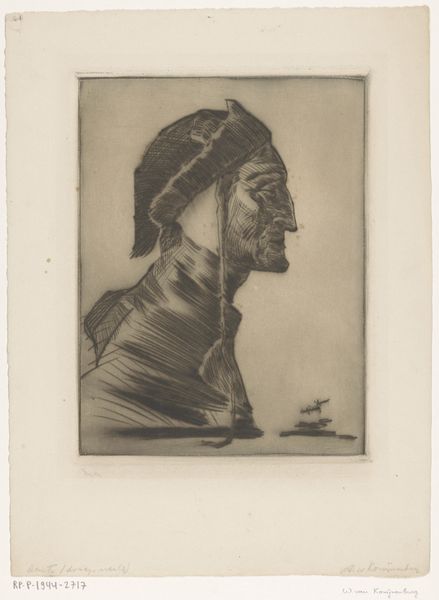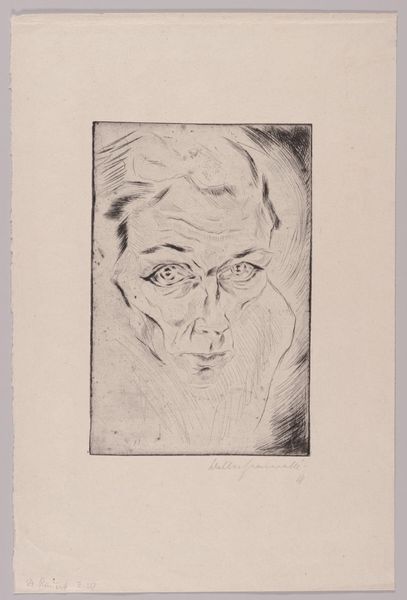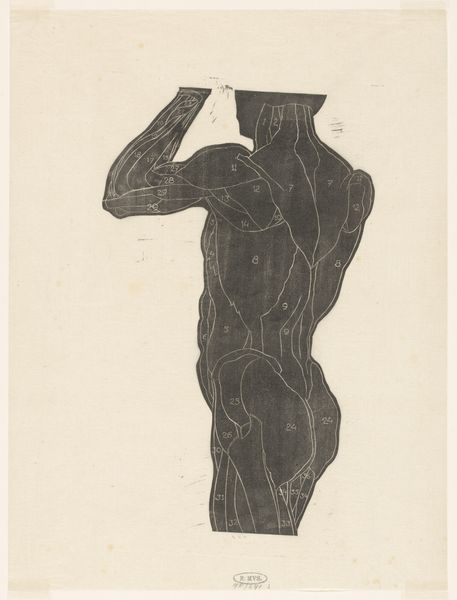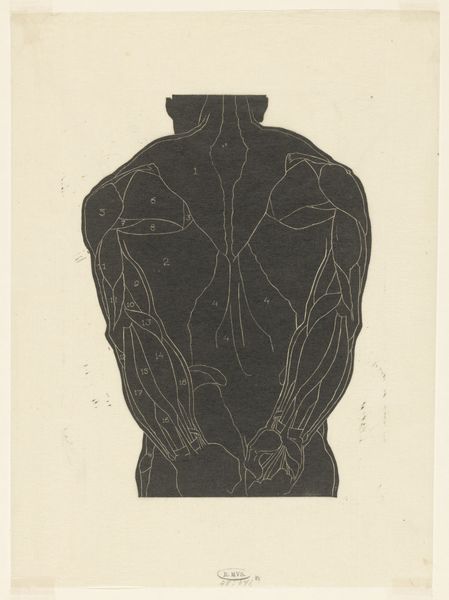
Dimensions plate: 20.4 x 19.6 cm (8 1/16 x 7 11/16 in.) sheet: 30.2 x 27 cm (11 7/8 x 10 5/8 in.)
Curator: Let’s explore Robert Austin’s print, "Mask," created in 1933 using the etching and engraving techniques. What's your initial take on it? Editor: Stark. The contrast is severe, emphasizing the solidity of the stone mask against the stark, almost clinical, white of the paper. There’s a peculiar juxtaposition here: cold sculptural material paired with a delicate, almost fragile, organic form. Curator: That interplay between organic and inorganic is key. The mask, though rendered in stone, hints at humanity – a face, partially obscured by foliage. Consider the socio-political climate of 1933; masks served as both literal objects and potent metaphors. The rise of fascism comes to mind and hiding oneself behind ideology and/or rhetoric. Editor: Indeed. And, materially, Austin’s engraving captures a compelling tonal range. Look at how the gradations create form; the precision evident in each delicate line. Semiotically, the mask is a signifier, obscuring more than it reveals. It begs the question: what truths are concealed? The composition is very structured. Curator: The foliage introduces layers of interpretation, disrupting a static reading of power and resistance to the same power structures. Foliage could represent nature reclaiming its space or it might refer to the way society and identity shape our public presentation. A softening of the harsh stone that speaks to human complexities beyond simplistic binaries. Editor: Do you feel there’s a visual tension between detail and generalization? Parts of the mask are painstakingly defined. Whereas, in other areas, lines are almost vague, letting the white space act as an absence or an openness. Curator: Exactly, the artist employs contrast on every level. The symbolic function is undeniable—an artifact removed from its original purpose and reborn through both organic life and Austin’s lines. A testament to resistance. Editor: I still admire its visual construction first and foremost: a measured distribution of light and shadow. It provides for great contemplation. Curator: A dual contemplation then, on the human condition and also the intrinsic construction within the work itself!
Comments
No comments
Be the first to comment and join the conversation on the ultimate creative platform.
